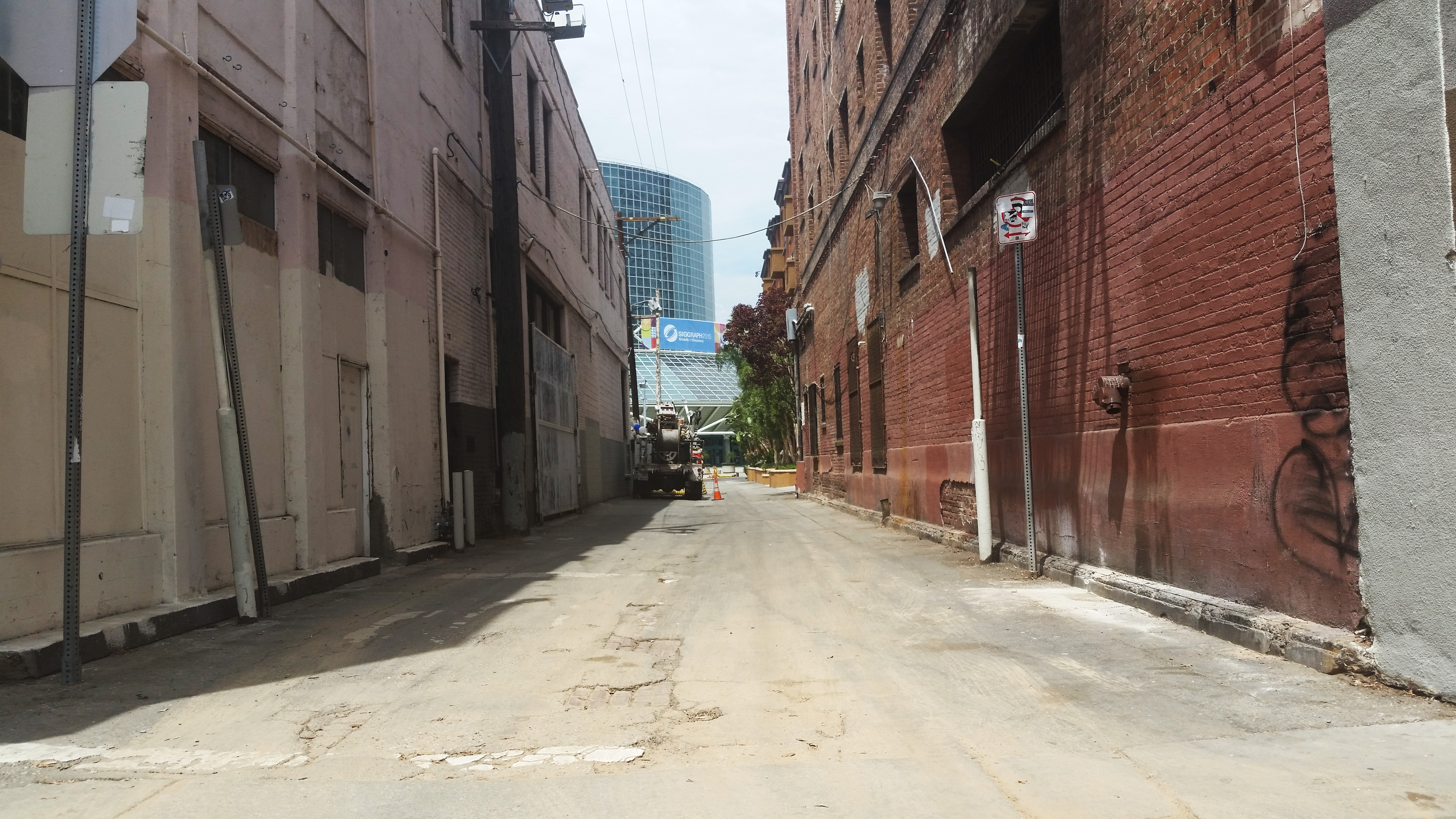
Alley in Los Angeles, California
In many cities around the world, the use of alleyways have been an integral part of the urban landscape. They have been a place of cultural and civic activity. However, in the United States, we have often viewed alleys as being unappealing service corridors associated with crime, vice, and street vagrancy. In other words, a space that is not meant for public use. However, several cities across the United States, including Baltimore, Chicago, and Seattle, have begun taking steps towards revitalizing their alleys through the infusion of green elements.
Envisioning a more sustainable and greener community, the South Park Business Improvement District (South Park BID) partnered with the Los Angeles Sustainability Collaborative (LASC) to organize the preparation of the “Green Alleys in South Park Visioning Report.” This report provides a series of recommendations for creating more green spaces through the revitalization of its twenty-two alleyways. The report provides three different typologies that would serve as a guide for their transformation. These are: Typology A (complete transformation); Typology B (partial transformation); and Typology C (baseline transformation).
Typology A is characterized by maximizing the pedestrian and cyclist experience. This means that, with the exception of emergency vehicles, there would be restrictions to all motorized transport and illegal dumping.
Under Typology B, the use of vehicles is allowed except for parking purposes and long idling periods. In addition, it grants all forms of transportation equal use of the space, as well as to the general public. Like Typology A, illegal dumping is prohibited.
Typology C grants the general public full access to the alley and allows for all forms of transportation. Like in Typology A and B, illegal dumping is prohibited. This typology enables vehicles to freely use the alleys for means of access and short-cutting but it means that it would limit the full community development potential.

Alley in Los Angeles, California
Common design interventions across all three typologies include:
- Permeable Surfaces
- Drought-Tolerant Plants
- Pedestrian Lighting
- Recycling and Trash Cans
- Public Art, Murals, Green Walls and Other Façade Improvements
- Bike Racks
- Wayfinding Signage and Branding
- Monitored and Patrolled Regularly
- Dog Waste Stations
Seeking creative ways to make use of underutilized spaces is necessary in areas that currently lack green space and inviting public spaces. However, there are some challenges that will have to be addressed when implementing any of these design ideas into the twenty-two alleys. Among these are the limited funding sources and the existing City of Los Angeles code and policies that do not contain provisions for this type of project. There is hope that through community participation, public-private partnerships, and changes to the Quimby Act, the revitalization of these alleys will take place.
How has the revitalization of alleys impacted the development of your community? What initiatives and policies have proved to be beneficial in making alleys greener in your community?
Credits: Images by Marisol Maciel-Cervantes. and data linked to sources.
*This blog was originally posted in August 2015. H/T The Global Grid